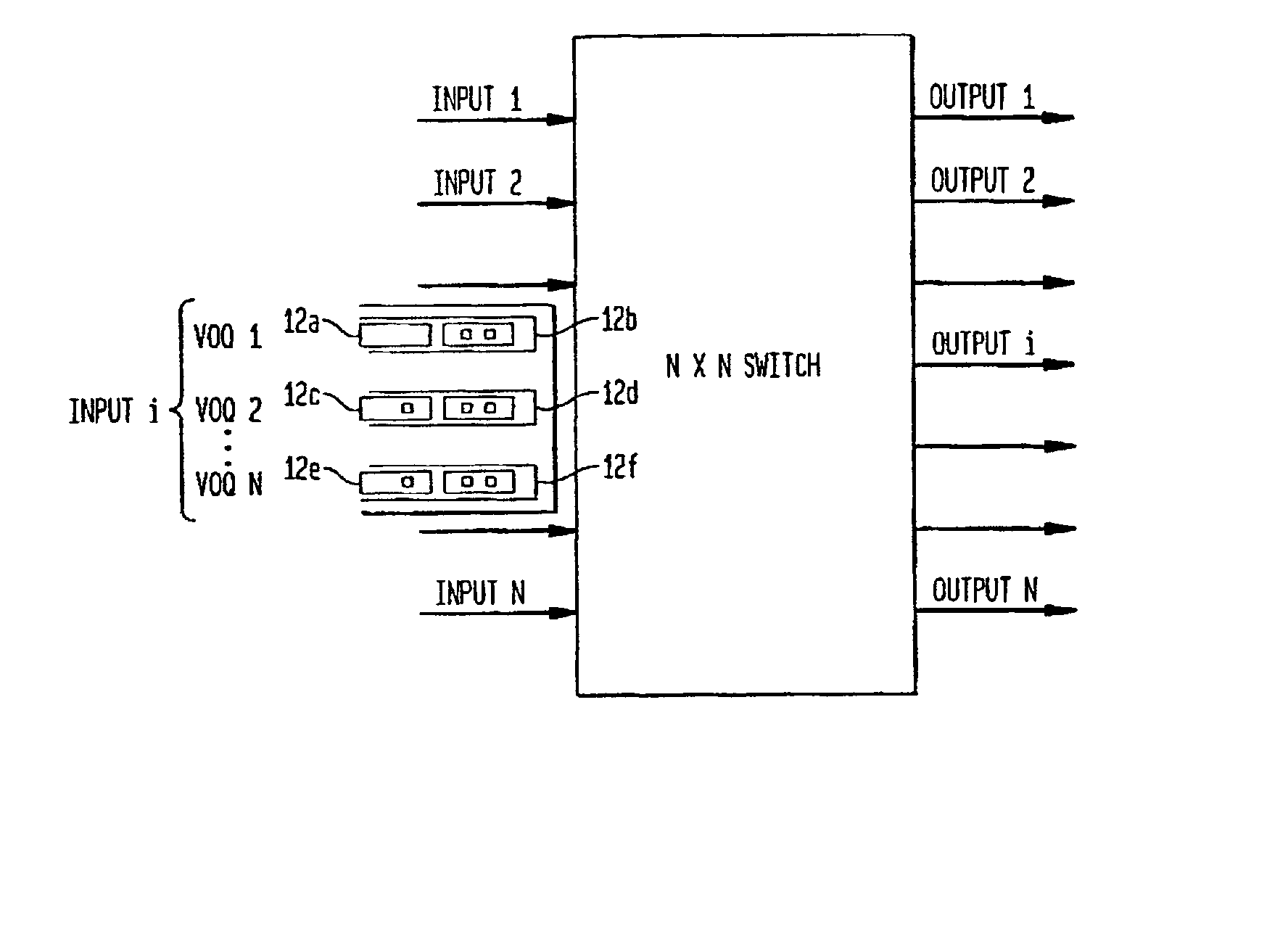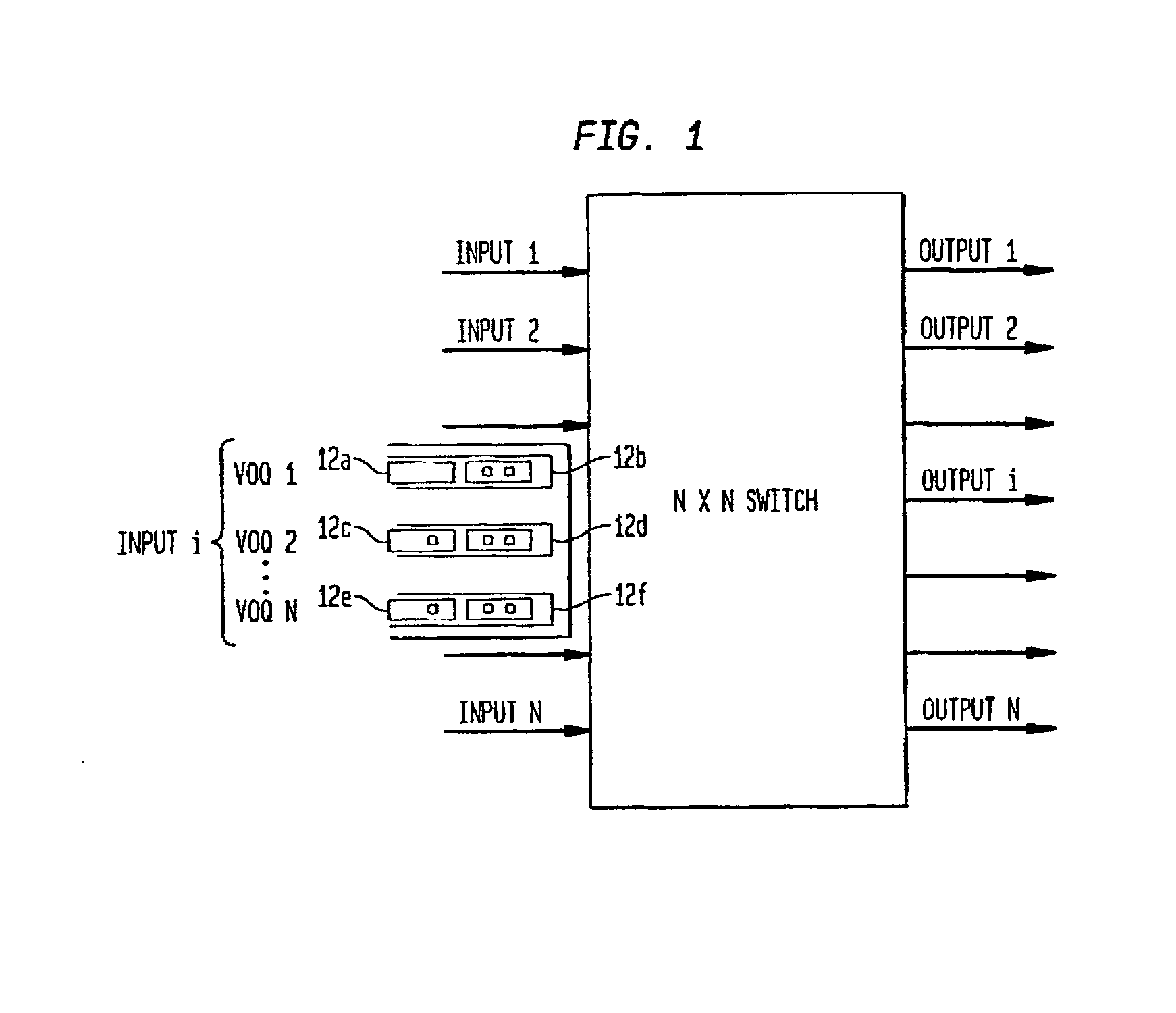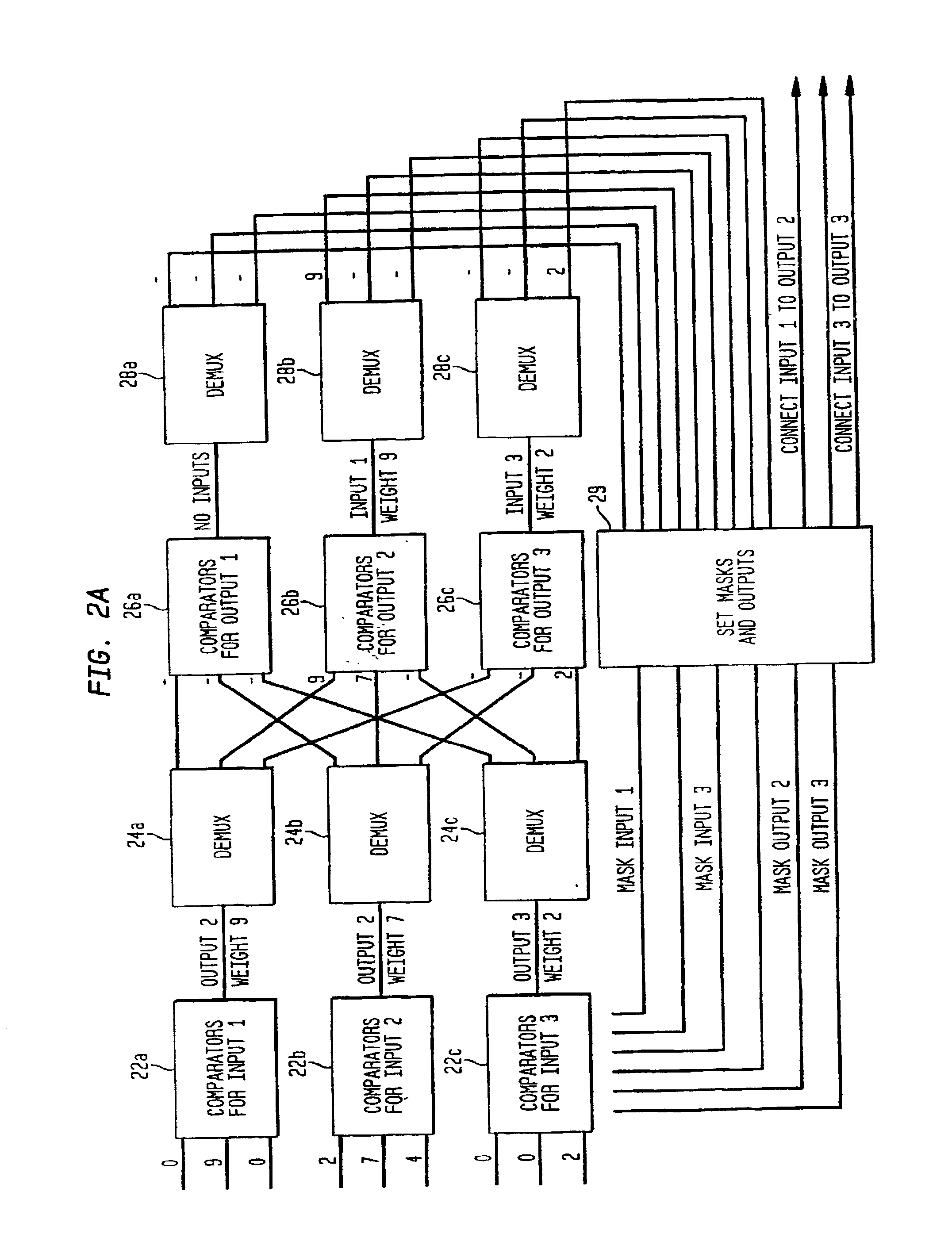Scalable weight-based terabit switch scheduling method
a terabit switch and scheduling method technology, applied in the field of forwarding data packets, can solve the problems of high line rate, high cost, and difficulty in utilizing random approaches at high speed, and achieve the effect of reducing the number of delays, and improving the speed of switching
- Summary
- Abstract
- Description
- Claims
- Application Information
AI Technical Summary
Benefits of technology
Problems solved by technology
Method used
Image
Examples
first hardware embodiment
[0068] First Hardware Embodiment
[0069] Referring now to FIGS. 2a and 2b, the first hardware embodiment is illustrated. In this embodiment it is assumed that all N.sup.2 weights are available at all times. For simplicity and ease of explanation the hardware illustration shows a 3.times.3 switch.
[0070] Referring first to FIG. 2a, the hardware can be considered to be made up of five stages. In stage 1, a set of comparators 22a-22c are utilized to allow each input to choose its highest weight output. In the example, a first input comparator 22a, chooses the second output, i.e., output 2, as the highest weight output, i.e., 9. In a similar fashion, comparator 22b also chooses the second output, output 2, as the highest weight output, i.e., 7 and comparator 22c chooses the third output, i.e., output 3, as the highest weight output, i.e., 2. In stage 2, the outputs from the first stage 1 are demultiplexed by demultiplexers 24a-24c. Demultiplexer 24a directs the input weight value, i.e., we...
second hardware embodiment
[0073] Second Hardware Embodiment
[0074] A drawback associated with the first embodiment (i.e., fast implementation) is that all the N.sup.2 weight values of the weight matrix are required to be passed to the circuit simultaneously. If the entries arrive from an off-chip source then a bandwidth of N.sup.2 time the rate at which the matchings need to be calculated which may be prohibitively large.
[0075] FIG. 3 illustrates a second hardware embodiment which overcomes the bandwidth limitations of the first hardware embodiment. In the present embodiment, the N weight entries are pipelined to the hardware at once. Advantageously, the pipelined configuration of the present embodiment requires less logic than the first embodiment. For simplicity and ease of explanation the hardware illustrations show a 3.times.3 switch.
[0076] With continued reference to FIG. 3, the hardware can be considered to be made up of four stages.
[0077] In stage 1, a single input comparator 32 is utilized. The single...
PUM
 Login to View More
Login to View More Abstract
Description
Claims
Application Information
 Login to View More
Login to View More - R&D
- Intellectual Property
- Life Sciences
- Materials
- Tech Scout
- Unparalleled Data Quality
- Higher Quality Content
- 60% Fewer Hallucinations
Browse by: Latest US Patents, China's latest patents, Technical Efficacy Thesaurus, Application Domain, Technology Topic, Popular Technical Reports.
© 2025 PatSnap. All rights reserved.Legal|Privacy policy|Modern Slavery Act Transparency Statement|Sitemap|About US| Contact US: help@patsnap.com



